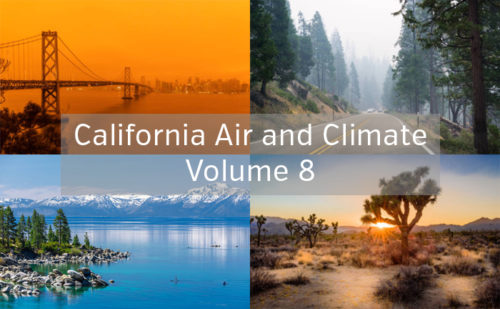California Air and Climate: CARB Audits SJVAPCD Emission Credit Program; Court orders EPA to Implement Landfill Methane Rule
May 2019
California Air and Climate, Vol. 8
CARB Announces Review of San Joaquin Valley Air Pollution Control District’s Emission Reduction Credit Program
The California Air Resources Control Board (“CARB”), in response to a petition from the Central Valley Air Quality Coalition (“CVAQC”), has agreed to review the San Joaquin Valley Air Pollution Control District’s (“SJVAPCD”) Emission Reduction Credit Program (“ERC”). California law requires local air pollution control districts to collect and track information about the cost of offsetting transactions from stationary source owners who purchase offsets as required by local New Source Review (“NSR”) programs. An ERC is generally described as a system “by which reductions in emissions may be banked or otherwise credited to offset future increases in the emissions of air contaminants, or which utilize a calculation method which enables internal emission reductions to be credited against increases in emissions.” See Cal. Health & Safety Code § 40709.5. SJVAPCD Rule 2201 is the District’s NSR rule, which creates the basis for emissions trading, including ERC banking. SJVAPCD Rule 2301 in turn provides the District’s banking rule, which sets forth eligibility standards and procedures for the storage and transfer of emission reduction credits.
CVAQC claims a substantial number ERC certificates are potentially invalid and that gaps in publicly available information make a complete review impractical. CARB granted the CVAQC petition and requested an audit of SJVAPCD’s ERC Program. The District agreed to cooperate. CARB’s review of SJVAPCD’s ERC Program is intended to examine the District’s equivalency determinations within the context of the District’s broader program for reducing emissions from stationary sources including NSR, permitting, and other regulatory requirements. CARB expects to release a draft report of its findings in August of this year. For additional information about CARB’s review of SJVAPCD’s ERC Program, please click here.
Federal Court Orders EPA to Implement Landfill Methane Rule
On May 6, 2019, the U.S. District Court for the Northern District of California ordered the United States Environmental Protection Agency (“EPA”) to implement its rule requiring regulation of landfill methane emissions by reviewing submitted state plans and developing a federal plan. The suit, brought by California and seven other states, claimed that EPA failed to perform non-discretionary duties adopted in its 2016 Emission Guidelines and Compliance Times for Municipal Solid Waste Landfills (“Landfill Emissions Rule”). Under the ruling, EPA must approve or disapprove state plans submitted by California and four other states within four months and develop a federal plan within six months.
Background
Under the Landfill Emissions Rule, states were required to submit, and EPA was required to approve or disapprove, implementation plans by May 30, 2017 and September 30, 2017 respectively. For states that did not submit approved plans, EPA was required to develop and impose a federal plan by November 30, 2017. The implementation plans include measures to significantly reduce methane rich-landfill gas emissions.
Prior to the first regulatory deadline, EPA granted a petition to reconsider the rule and issued a 90-day stay of the requirements (since expired). In October 30, 2018, EPA issued a proposal to delay implementation of the Landfill Emissions Rule so that the deadlines would start in August 2019, but has not adopted a final rule. California, one of five states to do so, submitted its 2010 Landfill Methane Rule as its implementation plan on May 25, 2017. To date, EPA has not taken action on the submitted plans, nor has it developed a federal plan.
Ruling
In front of the district court, EPA did not dispute that it had not met mandatory duties under the Landfill Emissions Rule. It argued, however, that the plaintiff states did not have standing to bring the action and that the plaintiffs’ proposed deadlines were not feasible. The court, relying on the Supreme Court’s ruling in Massachusetts v. EPA, which found states had the right to challenge EPA’s decision not to regulate greenhouse gases, found that the states again had “special solitude” to challenge EPA’s failure to perform a mandatory duty and that EPA’s statements in this rule demonstrated that landfill gas emissions contain numerous harmful pollutants.
The court then reviewed, in detail, EPA’s request for up to a year to review the existing state plans and six months to develop a federal plan. The court found no reason why EPA should need more than four months to review the currently submitted plans, nor more than five months to develop the federal plan.

